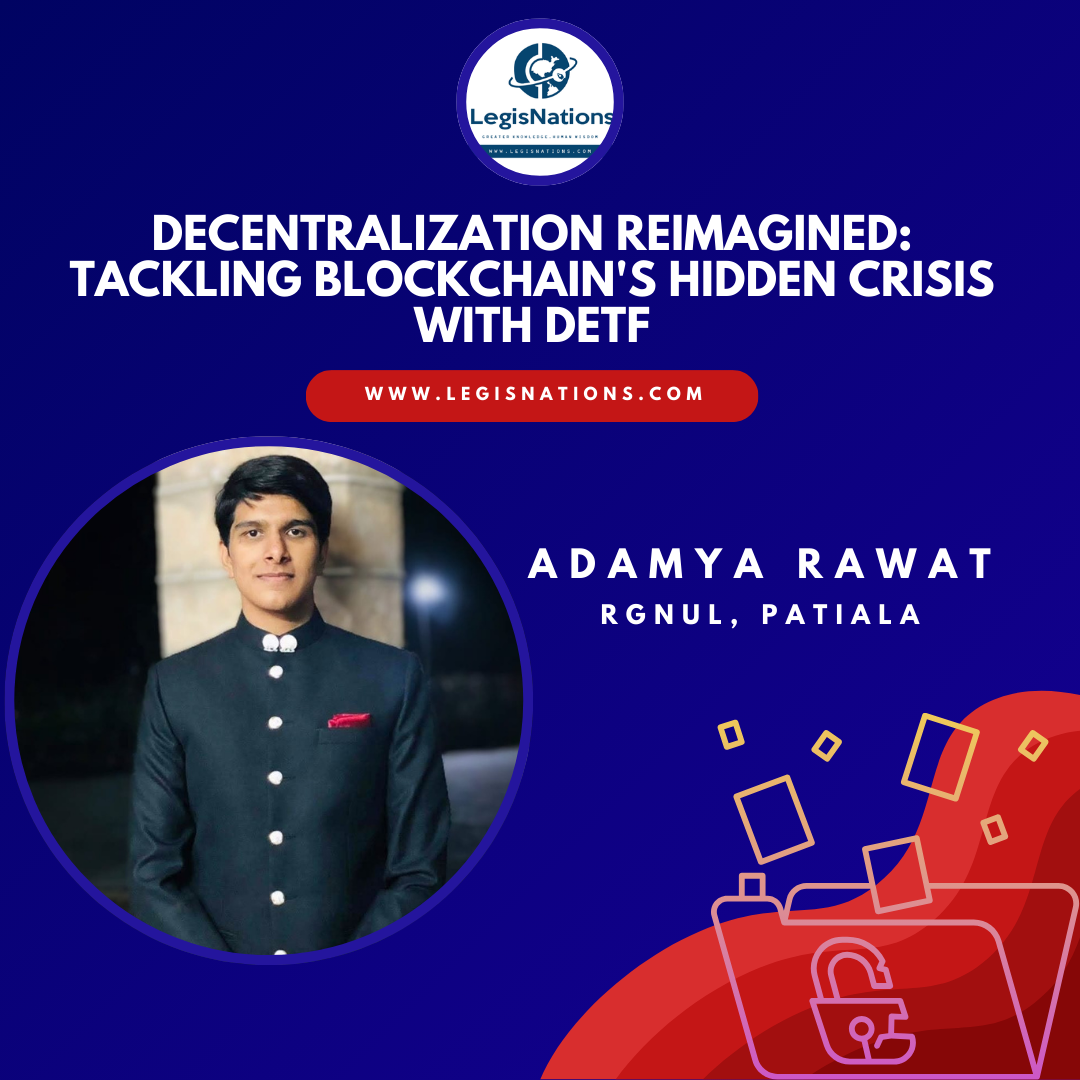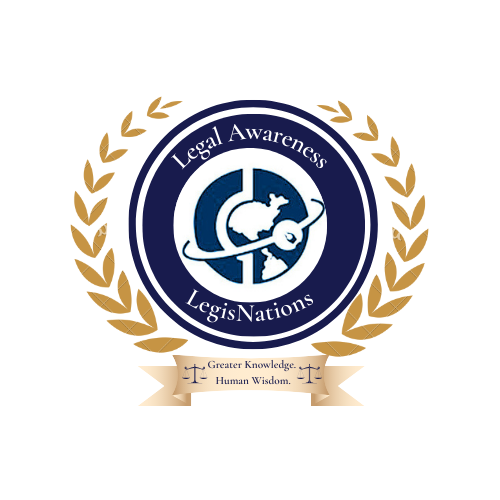I. Introduction
When $60 billion evaporates in a day, it’s time to ask: should we blame the market or the missing moral infrastructure? The catastrophic implosion of Terra-Luna and the spectacular collapse of FTX revealed cracks far deeper than poor risk management or rogue actors. They exposed a troubling truth: Trust, the foundational pillar of any financial system, remains shockingly underdeveloped in the decentralized world.
Tokenization offers immense potential: democratized finance, seamless global trade, and new models for ownership and value transfer. Yet, its transformative power is undermined by fraud, hidden centralization, and governance failures. In a system where no single entity holds absolute control, the system itself must safeguard trust. Trust must be embedded in the very fabric of decentralized finance, not patched in after a crisis.
This blog introduces a revolutionary model: Dynamic Ethical Tokenization Framework (DETF). It fills the trust deficit by interlinking ethical responsibility, fluid governance, decentralized audits, and real-time compliance. DETF is an integrated, dynamic framework to mitigate the most acute challenges of blockchain. The future of decentralization depends on robust, self-regulating systems and the time has come to move beyond idealism and build infrastructures of integrity.
II. Core Dilemmas of Tokenized Systems
Decentralized finance (DeFi) was created to remove gatekeepers and democratize finance, but its potential has been hindered by repeated fraud, mismanagement, and failures. Hidden centralization, weak governance, and regulatory gaps have eroded trust in tokenized systems, raising concerns about their future sustainability.
The Terra-Luna crash of 2022, which saw a $60 billion collapse in days due to flawed stablecoin mechanisms, highlighted deep systemic issues, poor design, weak governance, and misplaced trust in unverified protocols. Similarly, the FTX collapse exposed the dangers of hidden centralization. Despite its decentralized appearance, opaque management and concentrated control over funds triggered a meltdown that shook the entire blockchain community.
These failures illustrate a broader set of urgent issues:
- Regulatory Lag and Legal Uncertainty: Compliance gaps arise as legal frameworks struggle to keep pace with evolving blockchain technology.
- Ethical Governance Failures: Conflicts of interest and a lack of transparent governance mechanisms erode user trust.
- Accountability Deficiency: Token issuers and validators operate without proportional accountability or robust grievance redressal.
- Scalability and Fraud Detection Limits: Current systems cannot detect fraud at scale without compromising efficiency.
- Environmental Sustainability Challenges: Energy-intensive models worsen blockchain’s carbon footprint.
- Reputation and Trust Manipulation: Collusion, Sybil attacks, and manipulation by high- stakeholders plague decentralized reputation systems.
Without trust integrated into the infrastructure itself, decentralized finance remains vulnerable. The challenge is clear: How can we build resilient, scalable systems that embody transparency, accountability, and sustainability, without sacrificing the decentralized ethos?
III. Dynamic Ethical Tokenization Framework (DETF)
To address these limitations, we introduce the Dynamic Ethical Tokenization Framework (DETF), a novel model that decentralizes asset tokenization while embedding trust, ethics, and sustainability into its architecture. Unlike traditional models, DETF ensures dynamic governance through fluid validator rotation and a performance-linked reputation system. The Dynamic Ethical Reputation Index (DERI) adjusts roles based on trustworthiness, making unethical behavior costly. DETF fosters a self-correcting system where power is earned through trust and continuously redistributed, ensuring adaptability and preventing stagnation. It transforms decentralization into a living, evolving infrastructure.
Now, let’s look at its core components to gain a better understanding of this novel framework!
A. Decentralized Governance as Fluid Power
If centralization is the disease, governance fluidity is the cure. In DETF, decision-making is not a fixed hierarchy but a liquid, constantly shifting network of validators whose power is governed by performance, ethical reputation, and user trust. Key elements of Fluid Power Governance are as follows:
a) Introducing Liquid Validator Democracy
In DETF, governance is like a marketplace of trust, where power constantly shifts. Unlike traditional systems with fixed roles or centralized control, DETF allows power to change based on performance, reputation, and community trust. Validators don’t have permanent roles; their influence is linked to a reputation system. Ethical actions earn them votes, while mistakes lead to immediate consequences, keeping their power dynamic, and responsive.
b) Dynamic Validator Rotation
Imagine a public review system were users rate service providers. In DETF, validators, like moderators, rotate based on reputation scores. Misbehaving validators lose influence as users shift trust to better performers. This fluid trust reallocation prevents power consolidation and ensures accountability.
c) Performance-Linked Staking
Validators stake governance tokens based on their ethical reputation. Poor decisions reduce their stake and trust score, with penalties for affected users. This fosters active investment in good governance over passive entitlement.
B. Ethical Responsibility Mechanism (ERM)
Decentralized systems promise freedom but bring new risks—fraud, unchecked behavior, and manipulation. The ERM addresses these by promoting fairness, transparency, and accountability without reverting to central control. Key elements of ERM are as follows:
a) Proportional Accountability and Appeals
Accountability must be fair. In ERM, penalties match the scale of violations:
- Minor Violations (e.g., delayed reporting) reduce a validator’s trust
- Major Violations (e.g., fraud) result in slashing their staked tokens and temporary suspension. Catastrophic Failures (like system-wide hacks) activate a shared insurance pool to compensate users.
Example: Imagine a community-run food delivery app. Drivers caught falsifying deliveries (fraud) lose their rewards and face a suspension. Small errors like late deliveries reduce reputation without severe punishment.
b) Transparency with Consequences
Transparency is non-negotiable. Validators must publicly share governance actions. First-time non-compliance leads to a warning and trust reduction. Repeat offenses trigger stiffer penalties, eventually leading to expulsion.
c) Insurance for Systemic Risks
Shared responsibility pools protect users when failures affect the entire system. Validators contribute a portion of their stake, and funds are paid only after independent verification of catastrophic events. This discourages abuse and ensures only genuine failures are covered.
C. Fraud Detection via Decentralized Audit Pools (FDAP)
Fraud detection is critical in decentralized systems, especially for tokenized assets, where risks like rug pulls and market manipulation are significant concerns. The FDAP mechanism addresses these issues by offering a transparent, distributed, and reliable system for identifying fraudulent activity.
a) How FDAP Works
FDAP randomly selects auditors from a diverse pool, spreading fraud detection responsibilities across multiple stakeholders to prevent bias. For example, if automated algorithms detect unusual token transfers, an audit request is triggered. A group of auditors then reviews the flagged transactions to confirm if fraud has occurred, ensuring transparency and accountability.
b) Auditor Incentives
FDAP rewards auditors with reputation boosts and financial incentives for accurate fraud detection. For example, auditors who spot fraud patterns or predict potential fraud are rewarded with higher status and bonuses. Conversely, those who fail to detect fraud or make false claims face penalties, such as losing staked tokens.
c) Transparency and Accountability
FDAP ensures transparency by storing fraud reports on the blockchain, making them immutable and publicly accessible. This openness allows anyone to verify or challenge the results, fostering trust and ensuring accountability in the fraud detection process.
D. Dynamic Compliance with Real-Time Legal Updates (DCRTL)
In decentralized ecosystems, regulatory landscapes are constantly changing. The DCRTL allows blockchain systems to automatically adapt to these evolving laws without sacrificing efficiency or privacy. This approach integrates oracles, modular compliance templates, and adaptive dispute resolution mechanisms to ensure seamless and scalable compliance. Core elements of DCRTL include:
1) Multi-Source Oracle Networks for Legal Updates
Oracles collect legal updates from government bulletins and regulatory sources. To ensure the information is reliable, backup oracles are used if the primary ones fail, and a distributed consensus mechanism verifies the data before any compliance changes are made. Additionally, latency buffers are used to prevent premature reactions to incomplete or early data.
2) Modular, Industry-Specific Compliance Templates
DCRTL provides customizable compliance rules based on geography, industry, and asset class. Lightweight Compliance Kits (LCKs) allow small businesses to deploy legal modules, while Compliance Bridge Contracts ensure compatibility with older
3) Adaptive Legal Interpretation Layers
Machine learning models predict and interpret ambiguous regulations. Predictive compliance alerts notify stakeholders of potential legal changes, while grace period buffers extend deadlines based on historical enforcement data.
4) Real-Time Notifications and Dispute Resolution
Decentralized governance manages grace periods, regulatory changes, and A hybrid approach combining AI and human oversight ensures efficient dispute resolution, while batch dispute processing groups similar cases for faster handling.
E. Sustainability via Reputation-Based Consensus)
Reputation-Based Consensus (RBC) minimizes environmental impact by rewarding validators for ethical behavior instead of computational power. Validators earn trust through past actions, reducing resource consumption. For example, high-reputation validators process transactions efficiently without energy-draining proof validation. RBC also cuts redundant computations and reduces full validations, ensuring resource efficiency while maintaining security. This system offers energy-efficient, rapid transactions, replacing traditional resource-intensive consensus models with trust and reputation.
IV. Conclusion
The Dynamic Ethical Tokenization Framework (DETF) represents more than just a response to blockchain’s crises; it reimagines decentralization itself. By embedding trust, ethics, and fluid governance directly into the infrastructure, DETF dismantles the risks of centralization that plague current systems. Unlike conventional models that reward computational power, DETF empowers validators based on their ethical reputation, making trust the cornerstone of governance. This system actively prevents the concentration of power and ensures that ethical behavior is incentivized, not just compliance. The true power of decentralization lies in its potential to dismantle the old-world order — centralization is merely a dying relic.
References
1. Aramonte, S., Huang, W., & Schrimpf, A. (Year). DeFi risks and the decentralisation illusion. Bank for International Settlements. https://www.bis.org/publ/qtrpdf/r_qt2112b.pdf
2. Arner, D, R Auer and Frost (2020), “Stablecoins: risks, potential and regulation”, Financial Stability Review, Banco de España, no 39, Autumn.
3. Auer, R (2019): “Beyond the doomsday economics of ’proof-of-work’ in cryptocurrencies”, BIS Working Papers, no 765. https://www.bis.org/publ/work765.htm
4. Auer, R, C Monnet and H S Shin (2021): “Permissioned distributed ledgers and the governance of money”, BIS Working Papers, no 924. https://www.bis.org/publ/work924.htm
5. Badev, Anton, and Cy Watsky (2023). Interconnected DeFi: Ripple Effects from the Terra Collapse, Finance and Economics Discussion Series 2023-044. Washington: Board of Governors of the Federal Reserve System, https://doi.org/10.17016/FEDS.2023.044.
6. Born, A., Gschossmann, I., Hodbod, A., Lambert, C., & Pellicani, A. (2022). Decentralised finance – A new unregulated non-bank system? European Central Bank. https://www.ecb.europa.eu/press/financial-stability-publications/macroprudential-bulletin/focus/2022/html/ecb.mpbu202207_focus1.en.html
7. Cedra, A. (2024). Mitigating risks in decentralized finance: A systematic review of challenges and solutions. International Journal of Economic Perspectives, 18(1), 104–125. Retrieved from https://ijeponline.org/index.php/journal/article/view/549
8. Chainlink. (2023, August 9). Blockchain scalability: Execution, storage, and consensus. Chainlink Education Hub. https://chain.link/education-hub/blockchain-scalability.
9. Coase, R (1937): “The nature of the firm”, Economica, vol 4, no 16, pp 386–405.
10. DigFin. (2022, November 22). The fall of FTX: A tragedy in three acts. DigFin Group. https://www.digfingroup.com/ftx-binance/
11. Goodman Lantern. (2023). Asset tokenization in blockchain applications. Goodman Lantern. https://goodmanlantern.com/whitepaper/blockchain-assets-tokenization/
12. Hyscaler. (2023, December 13). Tokenizing trust: AI-powered tokens in the spotlight. Hyscaler. https://hyscaler.com/insights/ai-in-defi-tokens-trust-trends/
13. Okoth, L. (2023, September 12). Alameda research’s balance history on FTX confirms death blow happened during LUNA collapse, expert says. FXStreet. https://www.fxstreet.com/cryptocurrencies/news/alameda-researchs-balance-history-on-ftx-confirms-death-blow-happened-during-luna-collapse-expert-says-202309120314
14. Niti Aayog. (2020). Blockchain: The India strategy (Part I). Niti Aayog. https://www.niti.gov.in/sites/default/files/2020-01/Blockchain_The_India_Strategy_Part_I.pdf.
15. Q.ai. (2022, September 20). What really happened to LUNA crypto? Forbes. https://www.forbes.com/sites/qai/2022/09/20/what-really-happened-to-luna-crypto/
16. Rennie, E., Watts, J., Hwang, D., Ro, S., Feierbach, P., & Green, M. (2023). Validators and their governance participation: Identifying development paths for proof-of-stake blockchains with on-chain governance. MetaGov. https://metagov.github.io/validator/validator_governance_report_2023_09.pdf.
17. Walch, A (2019): “Deconstructing decentralization: exploring the core claim of crypto systems”, in C Brummer (ed), Cryptoassets: legal, regulatory, and monetary perspectives, Oxford University Press.


